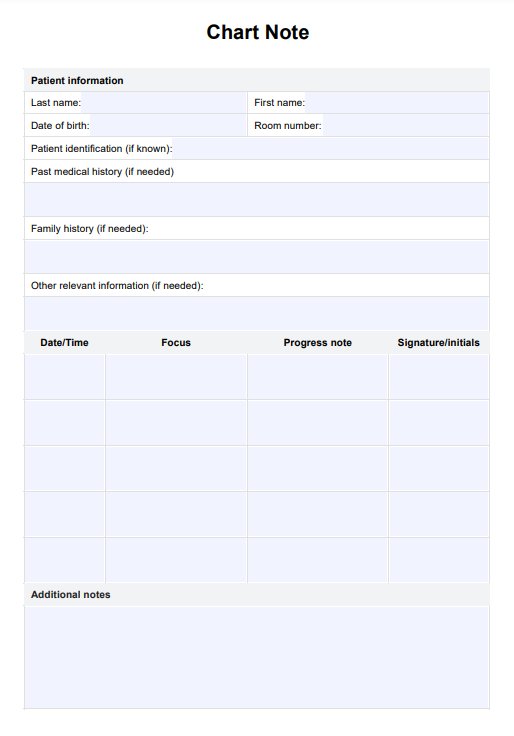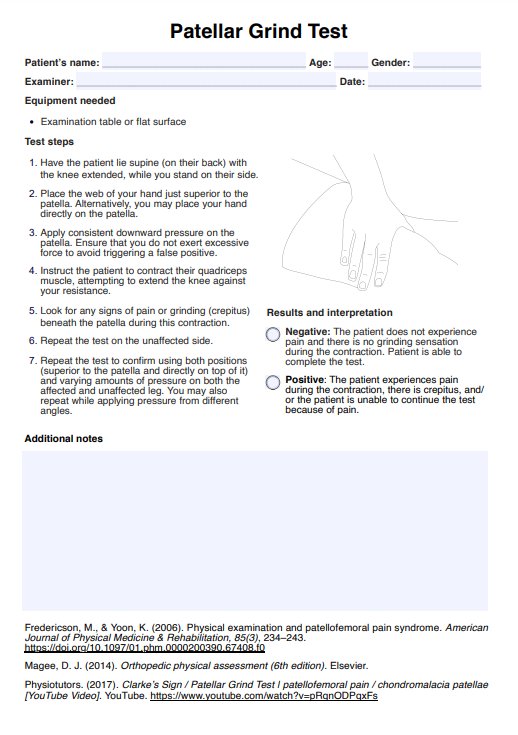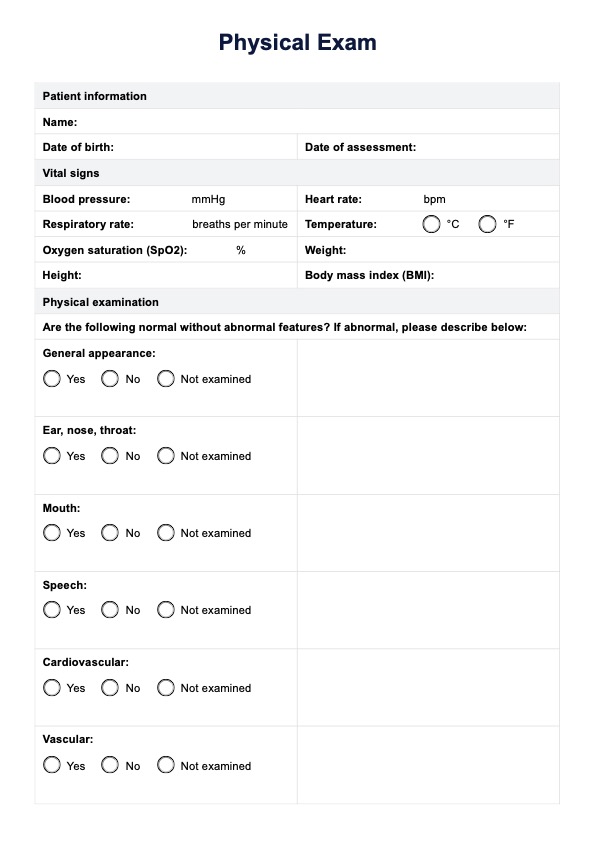Visual Scanning Worksheet
Help your patients struggling with visual neglect attend to the affected side of their vision with our Visual Scanning Worksheet.


What is visual scanning?
Visual scanning is a type of skill that can be used therapeutically for certain conditions that result in visual neglect. These conditions include stroke, traumatic brain injury, or brain tumors in some regions of the brain- particularly the right hemisphere (Li and Malhotra, 2015). Neglect is typically experienced on the contralateral side of a lesion, meaning that in most cases, neglect is experienced on the left side of the patient's vision due to a right-sided injury.
Visual neglect is not due to a primary sensory deficit but rather an issue of the attention paid to one side of the patient's visual field due to the neurological injury (Whitehouse et al., 2019). As such, in some cases, it can be diagnosed and potentially improved through visual scanning tools designed to identify problems and address visual perceptual skills.
Some benefits and skills can be acquired through the use of visual scanning tools to support patients with visual perceptual deficits, such as:
- Visual perceptual tracking abilities
- Fine and visual motor skills
- Hand-eye coordination
- Increased independence
Visual Scanning Worksheet Template
Visual Scanning Worksheet Example
What is a Visual Scanning Worksheet?
A Visual Scanning Worksheet is a resource for patients with visual neglect. It often includes activities that encourage systematic exploration of the visual field. These may involve locating and circling specific objects or letters on a page, connecting dots in a particular order, or identifying patterns within a complex image. Additionally, visual activities that require the patient to follow lines, find objects, or complete visual puzzles are exercises that promote focused attention on the neglected side.
Regardless of the specific visual discrimination activity, as long as your patient is encouraged to actively pay attention to the affected side of their vision, they will build up their visual skills and confidence in recognizing and attending to the impacted side of their vision.
How to use our Visual Scanning Worksheet
This Visual Scanning Worksheet is a simple therapeutic tool you can use with your patients immediately. Just follow these simple steps to get started.
Step 1: Download the worksheet
You can download your free copy of our printable Visual Scanning Worksheets using the link on this page or access it from within the Carepatron app, where you will find additional resources for your field or specialization.
Step 2: Patient details
We have provided space for the date and your patient's name to help store this worksheet in your client's record. Adding the date to each worksheet will allow you to monitor current and future progress more easily.
Step 3: Choose a letter for your patient to scan for
Pick a letter, any letter. We have ensured all letters are present in the letter search, so it's up to you which letter you ask your patient to scan the worksheet for. Depending on your patient's visual scanning skills, you can alter how you administer the activity. You may ask them to scan from left to right or give them a time limit to find as many instances of the letter as possible.
Step 4: Check the results
Once your patient has finished, check how they did. You can do this easily using the digital version of the Visual Scanning Worksheets by using CTRL + F to highlight all instances of the letter they were scanning for.
Step 5: Interpret the results
Did your patient consistently miss the letters on one side of their vision? Or did they quickly find all instances of the letter regardless of its placement on the page? The next step is to assess your client's visual perceptual skills based on their worksheet.
Benefits of visual scanning
Visual perception activities such as visual scanning can offer several benefits to patients, including the following:
Encourage attention on the affected side
Visual scanning exercises help patients with visual neglect redirect their attention to the neglected side, promoting awareness and engagement with the neglected visual field, ultimately aiding rehabilitation.
Boost fine motor skills
By actively scanning and attending to visual stimuli on the neglected side, patients can enhance their fine motor skills through improved hand-eye coordination and spatial awareness, fostering better control over movements in the affected area.
Easy to administer
Visual scanning activities are straightforward and can be easily incorporated into therapy sessions, making them a convenient and accessible rehabilitation tool for healthcare professionals working with patients experiencing visual neglect.
Monitor patient progress
Visual scanning tasks provide measurable benchmarks for healthcare providers to monitor patients' progress with visual neglect, allowing for the adjustment of therapeutic interventions based on the individual's advancements and specific needs.
Versatile therapeutic activity
Visual scanning exercises can be adapted to suit a variety of settings and patient preferences, making them versatile therapeutic activities tailored to the specific needs and interests of each patient undergoing rehabilitation for visual neglect.
References
Li, K., & Malhotra, P. A. (2015). Spatial neglect. Practical Neurology, 15(5), 333–339. https://doi.org/10.1136/practneurol-2015-001115
Whitehouse, C. E., Green, J., Giles, S. M., Rahman, R., Coolican, J., & Eskes, G. A. (2019). Development of the Halifax Visual Scanning Test: A new measure of visual-spatial neglect for personal, peripersonal, and extrapersonal space. Journal of the International Neuropsychological Society, 25(05), 490–500. https://doi.org/10.1017/S135561771900002X
Commonly asked questions
Visual neglect is a problem with perception rather than actual visual acuity. As such, it should be treated by a neurologist, occupational therapist, or other qualified professional.
We have not provided an answer key as this worksheet can be used for any alphabet letter, meaning 26 answer keys! Instead, one way to quickly see each letter's location is to use CTRL + F on the digital version of the template to highlight the letter you want to find.
The worksheet is not designed as a test but as a therapeutic tool to help your patients actively attend to the affected side of their vision. As such, the time to find all letters they are scanning for should only be compared to your patient's previous time to monitor their progress during their therapy sessions.


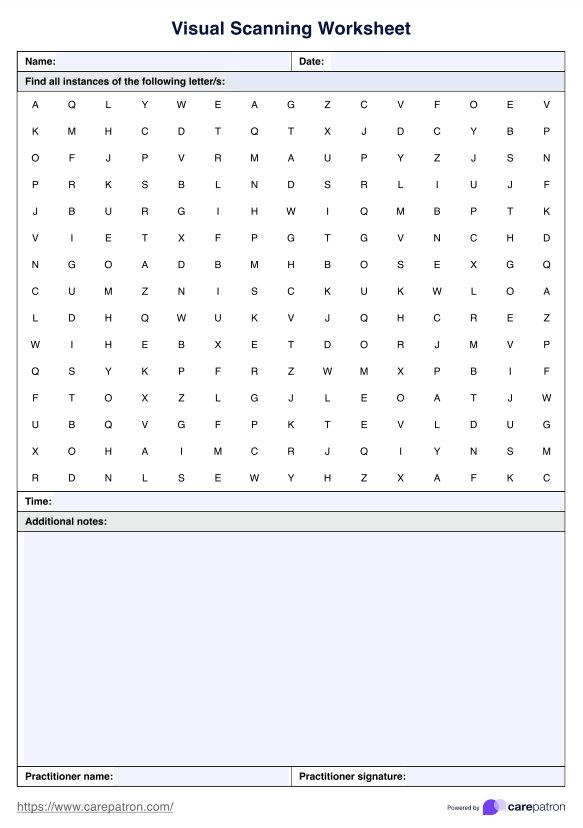
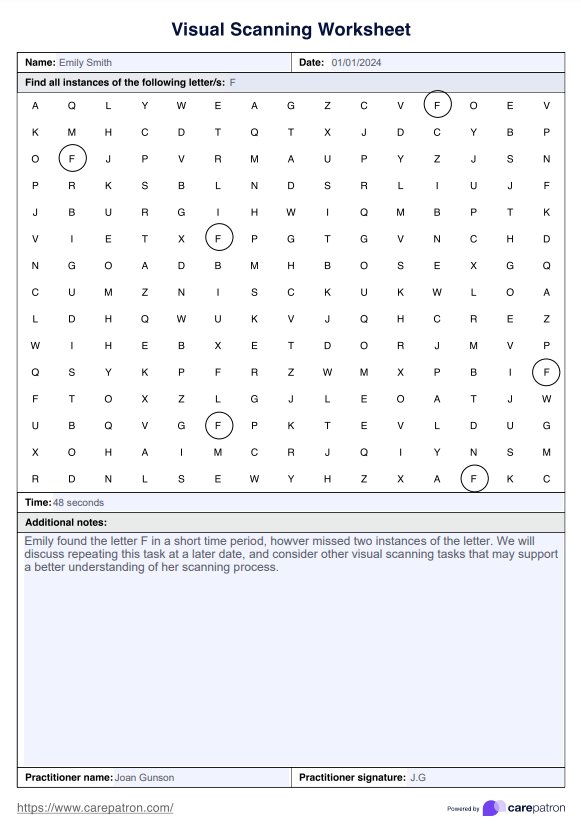



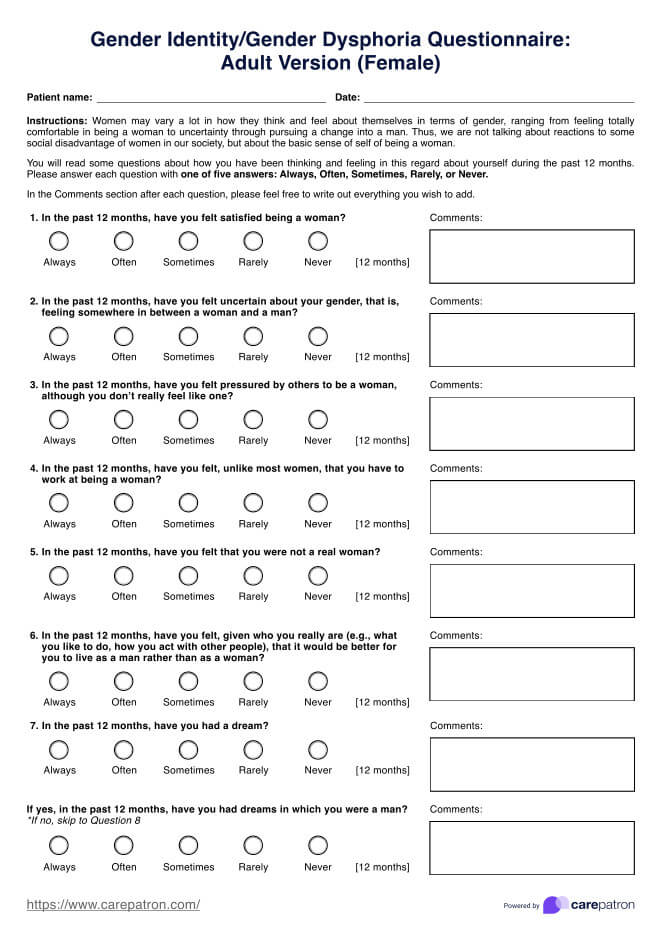













-template.jpg)


















































































